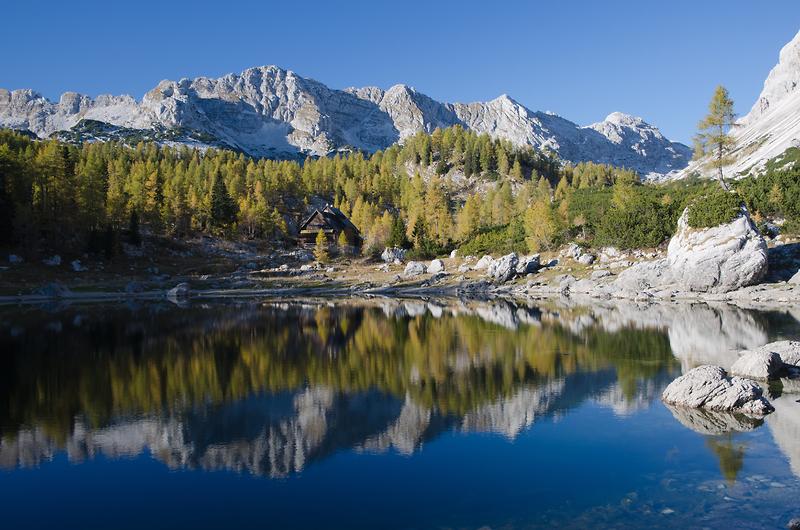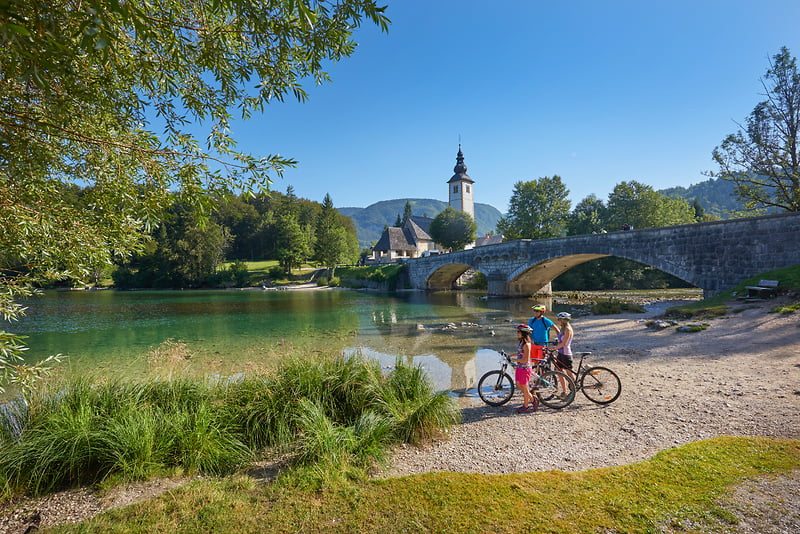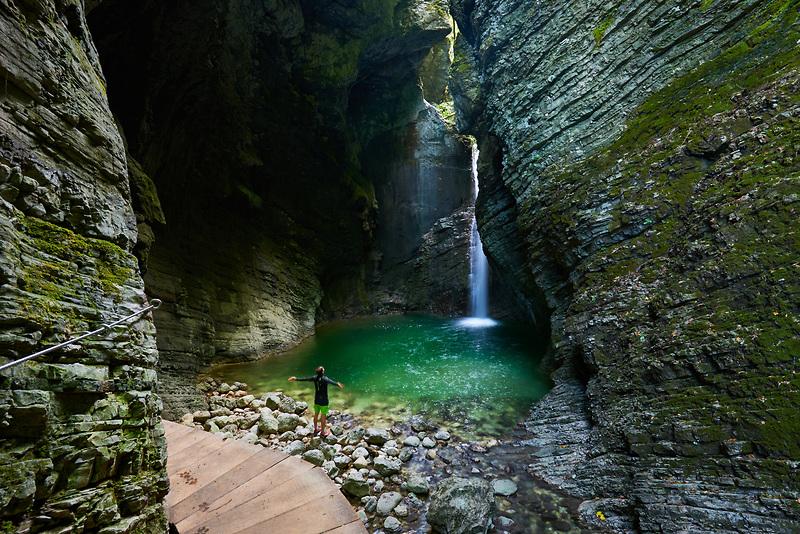Majestic, mysterious, exciting, playful, and unique. Slovenia’s only national park proudly covers 840 square kilometres in the heart of the Julian Alps.
Facts about Triglav National Park
Triglav National Park is the only national park in Slovenia that protects the last areas of pristine nature in the Alps. A diverse area of the highest peaks of the Julian Alps, their jagged ridges, vertical cliffs, deeply incised valleys, hard-to-reach gorges, wild waters, forests, blankets of alpine flowers, mountain lawns and scree, high-mountain karst, glacial lakes and the tender splendour of biodiversity.

The Triglav National Park Act, which increased the size of the park to 83,807 ha, was adopted in 1981. In 2010, the new Triglav National Park Act was adopted and the park was enlarged (to include the settlement of Kneške ravne and its surroundings).
Triglav National Park is one of Europe’s oldest parks. It lies in the north-west of Slovenia, on the border with Italy and close to the border with Austria, in the south-eastern part of the Alpine massif. It overlaps almost completely with the Eastern Julian Alps.

Paradise below Triglav
Magnificent views from the tall peaks, green Alpine valleys, babbling brooks and lakes that reflect the blue sky, and a huge diversity of flora and fauna. No, you’re not dreaming! You can experience all of this in Triglav National Park, Slovenia’s largest protected area and only national park. It takes its name from Slovenia’s highest mountain, Triglav (2,864 m), and is seen by many as a kind of holy mountain. The park encompasses the majority of the eastern part of the Julian Alps. In addition to its natural attractions you can feel man’s connection with nature, which is also evident in the park’s cultural heritage. There are abundant opportunities for exploring and active use of your free time, so what are you waiting for? Feel Triglav National Park in your own way.



Triglav National Park in numbers
Triglav National Park in numbers:
Total: 83,982 ha (4% of Slovenia).
– conservation area 1: 31,488 ha.
– conservation area 2: 32,412 ha.
– conservation area 3: 20,082 ha.
Highest point: Triglav, 2864 m
Lowest point: Tolminska korita, 180 m
Number of settlements: 33 (21 fully, 12 partially)
Population: 2,337 (January 2018)
The municipalities in the park are Bovec (30.1%), Bohinj (26.3%), Kranjska Gora (16.9%), Bled (1.8%), Tolmin (8.4%), Kobarid (3.7%) Gorje (12.7%) and Jesenice (0.1%).

The Triglav National Park has a total of 1013 natural values, 7 Special Protection Areas (SPA), of which 1 is a Special Area of Conservation (SPA), 6 Potential Conservation Areas (PAC) and 3 Ecologically Important Areas (IBA). By a UNESCO decision of 10 July 2003 Triglav National Park was included in the international network of MAB Biosphere Areas as the Julian Alps Biosphere Area, which covers the wider part of the Julian Alps up to the national borders with Austria and Italy.

On May 2004, the Triglav National Park was awarded a Council of Europe Diploma, which was renewed in 2009 for a further 10 years. The Triglav National Park also has 300 immovable cultural heritage units.The Triglav National Park also has 300 Intangible Cultural Heritage units.

Top Trip to Triglav Lakes
Triglav lakes are located in Triglav National Park in Slovenia. Triglav National Park is the largest protected area in Slovenia and the only Slovenian national park. Triglav National Park is located in the north-western corner of Slovenia next to the Italian and Austrian borders. Triglav National Park is also known for one of the best known Slovenian legends, which tell a story about a golden-horned chamois. With this being said, you might come across another name for the Triglav National Park, which is the kingdom of the Zlatorog.



Triglav lakes are located in the so-called Valley of the Seven Lakes (in Slovene Dolina sedmerih jezer), which is a wonderfully picturesque hiking destination in Triglav National Park. The Valley of the Seven Lakes is especially popular among landscape photographers.
The Valley of the Seven Lakes features seven permanent and a few intermittent lakes, which means the landscape of the lakes slightly changes from season to season, providing you with unique sights. You will be impressed by their natural colorfulness, also evident from their names – the Green, Brown, and Black Lake.

Savica Waterfall
Savica Waterfall is one of the most beautiful and picturesque waterfalls in Slovenia. Savica Waterfall is located above the steep slopes of Komarčna, near Lake Bohinj. Savica Waterfall is the source of the Sava Bohinjka river (also known as Savica), which on the bottom flows into the largest lake in Slovenia, Lake Bohinj.

Savica Waterfall is the third most visited attraction in Slovenia according to tourism center of Bohinj. Savica Waterfall is one of the most unique waterfalls in the world.

Savica Waterfall’s watercourse is divided into two parts in the hidden undergrounds. The famous A-shaped waterfall normally comes into sight at an altitude of 836 m and is 78 m high. Savica Waterfall is fed by the waters from the Valley of the Triglav Lakes and Pršivec that flow to it through a horizontal cave tunnel. The Karst cave with the source is full of siphons and lakes and is only accessible with a guide and proper equipment.

Do you want to have a more relaxing and diverse experience of hiking through the Julian Alps?
Triglav is not the only attraction around there. It’s part of the larger Triglav National Park, which boasts an endless amount of natural attractions. If you want to see at least some of that, go on a 3-day Triglav hut to hut hiking tour. This way you can also experience the highland world of Fužina alpine pastures, some still producing milk and cheese in the traditional way. After reaching the top of Triglav, you don’t have to go back the same way, but through the magnificent Triglav Lakes or the Seven Lakes Valley.
The multiple-day tour is a perfect way to see more of what the Slovenian mountains have to offer, while also getting the highest peak of Triglav under your belt.
















